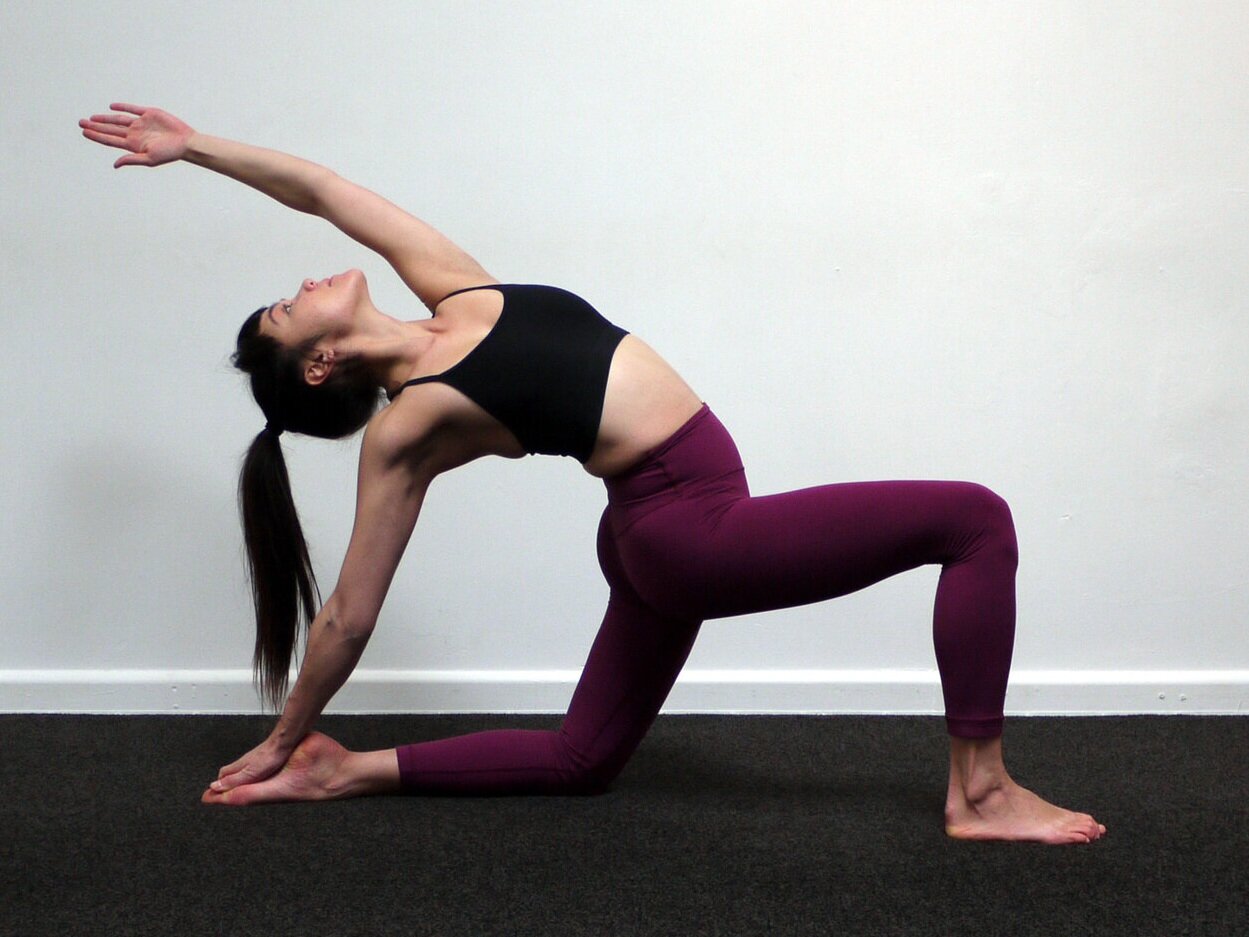How to improve your Lunges (Anjaneyasana).
WHY DO WE NEED TO BE GOOD AT LUNGES?
One of the main functions of lunges is to lengthen your hip flexors (this occurs on the back leg).
The hip flexors can become tight and short from lots of sitting, and activities such as running and cycling.
Also, if you have an anterior pelvic tilt, your hip flexor muscles will most likely be short and tight as well. When these muscles are too tight they can put strain on the lower back and also the knees.
Because of these reasons, lunges should be an important aspect of yoga practice for many practitioners.
Keeping your hip flexor muscles supple can help you with:
correcting an excessive anterior pelvic tilt
preventing lower back pain
backbends
Hanumanasana (splits - specifically the back leg)
THE HIP FLEXOR MUSCLES:
Some of these cross the hip joint and some cross both the hip and the knee.
The hip flexor muscles.
WHAT HAPPENS WHEN OUR HIP FLEXORS ARE TOO SHORT?
The joint between the femur and the pelvis is the hip joint. This joint should be able to move around 5 degrees into extension (which means backwards).
Tight/short hip flexor muscles restrict this movement backwards and when they are very tight they can cause the front of the pelvis to be pulled down into an anterior pelvic tilt.
A neutral pelvic tilt.
An anterior pelvic tilt - the front of the pelvis is tilted downwards.
In backbends, tight/short hip flexors prevent the movement of the pelvis backwards and cause us to arch our lumbar spine excessively to achieve the posture. This can cause the lumbar facet joint compression that I have mentioned in other posts.
The hip flexor muscles are long enough to allow the pelvis to tilt backwards in Ustrasana.
The hip flexor muscles are too short to allow the pelvis to tilt back. In fact, they are pulling it forward, which causes excessive arching in the lumbar spine - leading to compression and discomfort.
THERE ARE 2 MAIN CATEGORIES OF LUNGES:
To make sure we lengthen each and every hip flexor we need to practice both types.
Straight leg lunges - where the back knee is straight
Virabhadrasana 1
Virabhadrasana 2
Lunge variation
Lunge variation
Bent knee lunges - where the back knee is bent
Lunge variation
Lunge variation
Lunge variation
Lunge variation
LUNGE TECHNIQUE
It is important when practicing lunges to keep the pelvis in an “upright” position. If you allow the pelvis to tilt forward as you lunge, you will not be lengthening the right muscles. When your hip flexor muscles are short you will feel them trying to pull down the front of the pelvis. You need to resist this dragging feeling and maintain the upright position of the pelvis. This will ensure you get a good stretch right where you need it.
I have seen many people doing lunges with the pelvis tipping forward and they are missing out on the stretch. All that happens when we practice like this is the lower back arches with a minimal stretch on the hip flexor muscles.
In the first drawing, the pelvis remains upright, giving a good stretch to the hip flexors. In the second drawing the pelvis is tilting forward which gives less stretch and increases the lumbar curve.
HOW TO PROGRESS IN LUNGES
Start with the straight leg lunges, such as Virabhadrasana 1 and 2, they will lengthen your 1 joint hip flexors. Be sure to keep your pelvis stable and upright. Only lunge as deeply as you can maintain your pelvis upright and your lumbar spine in neutral. Use your lower abdominal muscles to hold the pelvis steady.
Then progress to the bent knee lunges; they will lengthen your 2 joint hip flexors. Be aware, the more you bend your knee, the more intense the stretch, so go slowly and carefully. When you are doing lunges where you are holding the back foot, make sure you resist your foot back into your hand. This will prevent you from feeling pulling in your knees. That pulling sensation is often the tendons being overstretched which should be completely avoided. The stretch should be felt in the belly of the muscle (the thigh area), not at your knee.
Include a variety of orientations in your lunges. If you think of the difference between Virabhadrasana 1 and 2, one is facing forward and one is facing to the side. The differing angles allow us to access different muscles. You can apply this to the bent knee lunges as well - facing forward, to one side, to the other side. Each movement will change the angle of the stretch.
SEQUENCING
Lunges are important asanas in their own right. In terms of sequencing, they are important as a warm up for backbends and Hanumanasana (the splits). For some people, not including them may lead to discomfort in the lower back in these asanas.
written by Jean Campbell
Interested in learning more about how anatomy relates to yoga practice?
Have a look at my Online Dynamic Yoga Anatomy Course.














